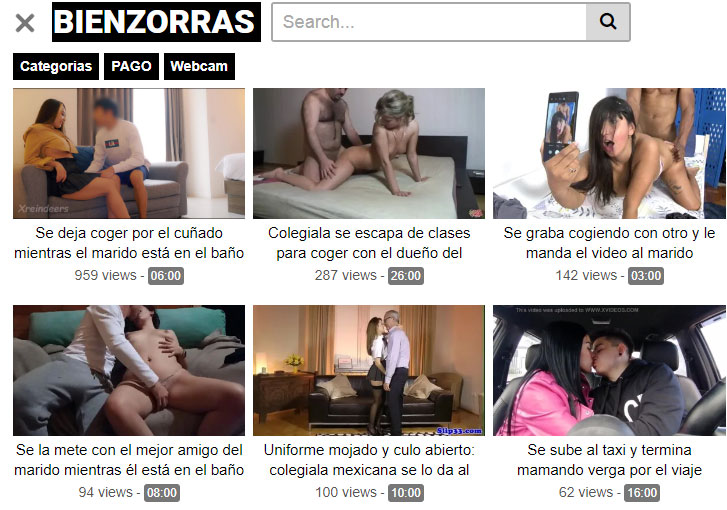“HD” gets slapped on everything. You want the real thing—in Spanish—without wasting half your night testing players, closing pop-ups, and second-guessing thumbnails. Here’s a no-fluff routine to spot genuine HD fast, keep it smooth on mobile and desktop, and leave the rest behind.

What you actually mean when you say HD
You’re not chasing marketing words. You want steady full-screen playback, a visible quality selector, and a stream that holds 720p or 1080p when you skip around. You also want Spanish as a proper lane, not a token tag. So when a site claims to offer porno español HD, the promise should show up where it matters: in the player, in the labeling, and in your first two minutes on the page.
The two-minute HD test (use this every time)
- Full screen first. If full screen flickers or resets the page, you’ve already got your answer.
- Find the selector. Pick 720p, then try 1080p if available. If the option is buried behind tiny icons (especially on mobile), you’ll be fighting it all night.
- Skip twice. Jump ahead 10–30 seconds two times. True HD keeps its sharpness; fake “HD” stutters, smears, or quietly drops to 480p.
- Listen once. Peaks or crackle mean poor audio mastering. Good HD comes with sane audio.
Language is a lane, not a label
HD without Spanish curation is still a detour. Use the site’s internal search for “español” and make sure results stay in Spanish across titles and summaries after filtering. If you’re forced to open extra tabs “just to check,” you’re paying a time tax. A Spanish-first catalog cuts you straight to decision.How real HD looks (and how impostors give themselves away)
- Edges. Watch hairlines, text on-screen, fine patterns. HD holds detail during skips.
- Skin tones. Natural tones with gentle gradients beat oversharpened plastic skin.
- Low light. Real HD keeps shape in shadows; pretenders block up into chunky squares.
- Stability. If every jump forces a rebuffer or resolution drop, servers are underpowered.
Mobile vs. desktop: the baseline that saves your patience
- On mobile: large touch targets, quality selector within one tap, timeline not hidden by overlays, and resume position if you switch apps.
- On desktop: spacebar pause, arrow-key seek, consistent full screen, and a breadcrumb back to your shelf without reloading the whole site.
Ad behavior: quick “yes/no” that protects your sanity
Yes: a short pre-roll, a static sidebar, one interstitial that doesn’t hijack controls. No: pop-ups covering the play button, fake “play” overlays, or new tabs on basic clicks. If your first click is a trap, the next five will be too—close the tab.A simple workflow to stop the tab spiral
Stick to one shelf at a time. Pick two items from the top row and one from the second. Run the HD test on the first. If it passes, you’ve likely vetted the shelf’s infrastructure. If it fails, don’t negotiate—try the second item. Two fails in a row? Switch shelves. Decision fatigue solved.Choosing the right HD lane
- Amateur/casero (Spanish): natural vibe with acceptable clarity. Expect 720p that holds steady. Great when you want warmth over gloss.
- Studio (Spanish): more controlled light and audio; 1080p should be common and stable. Good when you want polish.
- Middle ground: casual feel with better mics and steadier framing. Ideal for “relaxed but clean” nights.
Duration matters for quality too
Short clips (< 10 min) often look crisp even on weak servers. Mid-length pieces (15–30 min) reveal truth: if the platform can’t keep 720p/1080p stable across jumps and scene changes, you’ll feel it immediately. Choose duration based on your plan and the site’s performance during your test.Peak-hour check (the step most people skip)
Test when you actually watch—evenings, regular Wi-Fi or ordinary 4G. Real HD holds up under load. If 8–10 p.m. turns the player into a buffering bar, that catalog won’t fix itself mid-session.Reading shelves without overthinking
- By language: Spanish shelves should be reachable in two clicks, with summaries in Spanish—not a random mix after filtering.
- By mood: soft/romántico, playful, high-energy. Mood labels reduce mismatches later.
- By style: amateur vs. studio vs. middle ground. Clear lanes save time.
- By time: short vs. mid-length. Time filters prevent endless scrolling.
Audio: the HD most people forget
Bad audio makes good picture feel worse. Solid catalogs keep levels even—no sudden spikes that force volume rides. A quick headphone check before casting to TV will tell you if the mastering is sane. If dialogue in Spanish dips under ambient noise, pick another item or shelf.Privacy basics that keep things simple
- Keep your browser updated; skip “miracle” extensions.
- Decline odd permissions; never drop personal info into random pop-ups.
- If a “plugin” is required out of nowhere, leave. Free catalogs shouldn’t demand software.
Small habits that compound into calm sessions
- Bookmark by lane. “Español – HD,” “Español – amateur,” “Español – estudio.” Keep shelves that consistently deliver stable playback.
- Use “Recently viewed.” If available, it trims your next visit to two clicks.
- Have one backup shelf. If the first pick buffers at peak time, swap without debate.
Common myths (and the short truth)
- “If the title says 1080p, it’s fine.” Not unless it holds during two skips.
- “If it buffers, my internet is the problem.” Sometimes. Often it’s underpowered servers.
- “All Spanish shelves are the same.” The difference is curation and infrastructure. You’ll feel both in a minute.
Micro scorecard: decide in under two minutes
- Language fidelity: Spanish titles + summaries + filters (pass/fail).
- Player stability: 720p/1080p holds through two skips (pass/fail).
- Curation: shelves rotate weekly; descriptions say why items belong (pass/fail).
- Ads: no pop-ups on controls; no fake play buttons (pass/fail).
- Parity: mobile touch targets + desktop keyboard basics (pass/fail).











